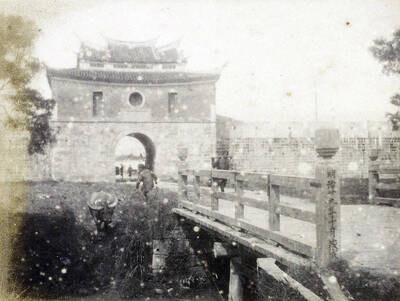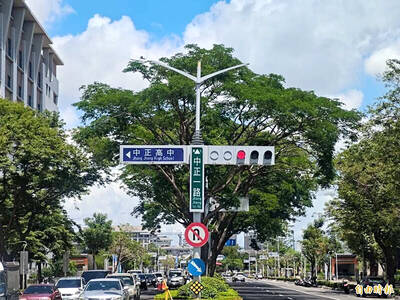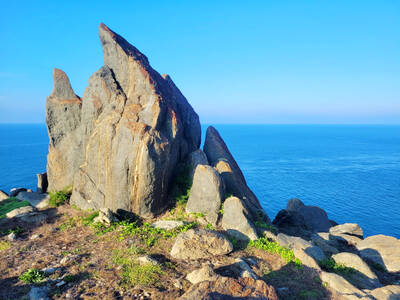The fear that lay behind North Korea’s launch of a Taepodong-2 missile last weekend was that this was the test-firing of a vehicle capable of carrying a nuclear warhead to a foreign country. It was clearly only described for domestic consumption as carrying a satellite; The US military said no satellite was observed, and rather than the launch being a near-farcical failure, it was probably a success if its intention was military, and essentially for foreign eyes.
This combination of the farcical and the unprecedented everywhere characterizes North Korea, certainly as illustrated in Mike Chinoy’s magnificent Meltdown. It tells the tale of US-North Korean relations over the last 15 or so years, beginning with the Clinton administration and ending with the last days of George W. Bush’s presidency.
Chinoy, longtime Asia correspondent for CNN, has made North Korean affairs his specialty. He has visited the country many times, once as the sole journalist to accompany Jimmy Carter there in 1994. He lists 151 people he’s interviewed, including South Korea’s former premier Kim Dae-jung and the US’s Colin Powell, Richard Boucher, Madeleine Albright, Richard Armitage, Warren Christopher, Richard Lawless and Christopher Hill; unfortunately no North Korean official agreed to an interview.
His essential thesis is that the Clinton administration very nearly brought about the closing down of all Pyongyang’s military-related nuclear activity, with Clinton on the edge of visiting the country in the last days of his presidency. All this good work (in Chinoy’s view) went up in smoke with President Bush’s 2002 “Axis of Evil” speech, with this unpropitious beginning followed by eight years of vacillation and “internal factionalism,” ending with the U-turn of December 2007 when Bush offered Pyongyang fully normalized diplomatic relations in exchange for disclosure and abandonment of its nuclear program.
This analysis may not be to everyone’s taste but, once accepted, it allows the reader to relish Chinoy’s detailed account of the progress of events on a week-by-week basis, not only in Washington but also in Pyongyang, Tokyo and Seoul. He weaves together his own involvement as a reporter, in-depth research as the Edgerton Fellow on Korean Security at the Pacific Council on International Policy in Los Angeles, and what must be the widest range of high-level contacts in the business.
Everyone will want to know what Chinoy thinks of the North Koreans and their enigmatic leadership. His analysis appears to be this. What Pyongyang’s leaders want most of all is regime security — they don’t want to be toppled in the way the leaders of Iraq, the Soviet Union and Romania were. In order to achieve this they involve in diplomatic brinksmanship, ratcheting up their bargaining chips in the hope of gaining life-saving aid and recognition. Their essential mindset, he believes, is to meet hostility with hostility, but meet benign overtures with a benign response. They are also adept at holding back their trump card until the last possible moment.
As for the more bizarre aspects of this extraordinary country, details are legion. The relation with Macau’s tiny Banco Delta Asia (allegedly used for money-laundering and the passing of counterfeit US dollars, plus the purchase of luxury items for the Pyongyang leadership), the “payment” for the 1997 US visit to the suspected nuclear site of Kunchangri with 100,000 tonnes of potatoes (not such a bad idea, North Korea suffering periodically from famine, and its climate being ideally suited to the cultivation of this food), the long-denied relationship with Syria, whose own nuclear facility was destroyed by Israeli jets in 2007, the Dear Leader’s 24-day train journey across Russia in 2001, and the now admitted abduction of Japanese nationals — all are there in this quite exceptional book.
Chinoy’s view, nonetheless, is that North Korea is not to be mocked, let alone damned outright. Isolation is the beginning and end of its dilemma. Even Beijing, once its closest ally, apparently views it nowadays with distrust. Where else can it turn? So instead of seeking to please, it behaves like a hornet, more than ready to sting anyone who approaches with dubious intent, and determined to show that, despite its size, relative poverty and lack of international friends, it can return hostility with hostility any day of the week.
And so it was that this country became, on October 9, 2006, the world’s eighth declared nuclear power. The device tested was very small, 50 times smaller than the bomb dropped on Nagasaki in 1945. Even so, its detonation represented, Chinoy insists, the “utter failure” of the Bush administration’s entire approach. Even China was “outraged.” It’s the purpose of Meltdown to demonstrate how such an extremely undesirable turn of events came about.
If you want insight, and from an Asian perspective, into how the Bush administration worked, this book will supply it. If you want to know how North Korea lives, from the Dear Leader’s rumored collection of 20,000 Hollywood movies to the orange-sized tumor on the right side of the late Great Leader’s neck (there’s even a photo of Chinoy offering him his business card), then again this book is the place to find it.
This is a tragic tale in Chinoy’s telling — how Washington turned its back on diplomacy, alienating its South Korean ally in the process, and in effect precipitated the nuclear crisis we now live with. Chinoy doesn’t anywhere spotlight the current US president, but there can be no doubt whatever at the delight he must feel in the change of the man at the helm.

June 9 to June 15 A photo of two men riding trendy high-wheel Penny-Farthing bicycles past a Qing Dynasty gate aptly captures the essence of Taipei in 1897 — a newly colonized city on the cusp of great change. The Japanese began making significant modifications to the cityscape in 1899, tearing down Qing-era structures, widening boulevards and installing Western-style infrastructure and buildings. The photographer, Minosuke Imamura, only spent a year in Taiwan as a cartographer for the governor-general’s office, but he left behind a treasure trove of 130 images showing life at the onset of Japanese rule, spanning July 1897 to

One of the most important gripes that Taiwanese have about the Democratic Progressive Party (DPP) is that it has failed to deliver concretely on higher wages, housing prices and other bread-and-butter issues. The parallel complaint is that the DPP cares only about glamor issues, such as removing markers of Chinese Nationalist Party (KMT) colonialism by renaming them, or what the KMT codes as “de-Sinification.” Once again, as a critical election looms, the DPP is presenting evidence for that charge. The KMT was quick to jump on the recent proposal of the Ministry of the Interior (MOI) to rename roads that symbolize

On the evening of June 1, Control Yuan Secretary-General Lee Chun-yi (李俊俋) apologized and resigned in disgrace. His crime was instructing his driver to use a Control Yuan vehicle to transport his dog to a pet grooming salon. The Control Yuan is the government branch that investigates, audits and impeaches government officials for, among other things, misuse of government funds, so his misuse of a government vehicle was highly inappropriate. If this story were told to anyone living in the golden era of swaggering gangsters, flashy nouveau riche businessmen, and corrupt “black gold” politics of the 1980s and 1990s, they would have laughed.

It was just before 6am on a sunny November morning and I could hardly contain my excitement as I arrived at the wharf where I would catch the boat to one of Penghu’s most difficult-to-access islands, a trip that had been on my list for nearly a decade. Little did I know, my dream would soon be crushed. Unsure about which boat was heading to Huayu (花嶼), I found someone who appeared to be a local and asked if this was the right place to wait. “Oh, the boat to Huayu’s been canceled today,” she told me. I couldn’t believe my ears. Surely,